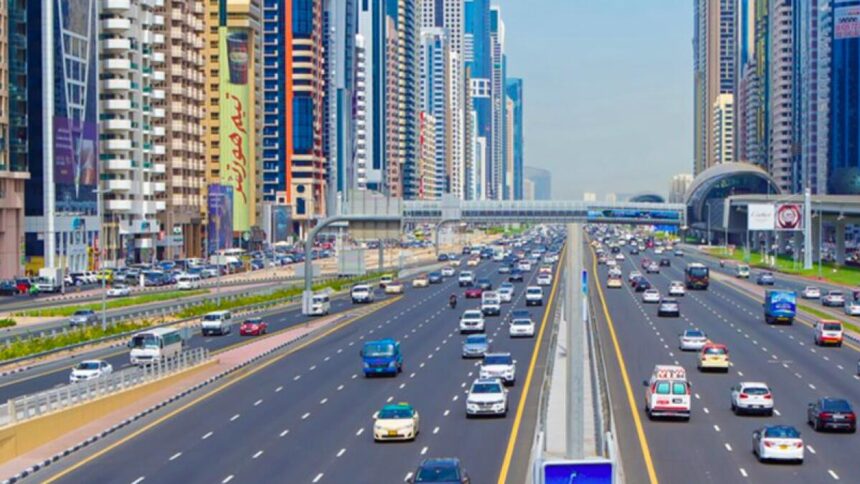Dubai’s Roads and Transport Authority (RTA) has reached a significant milestone with the completion of the Al Shindagha Corridor Development Project on the Bur Dubai side, dramatically improving travel efficiency across one of the city’s busiest traffic routes.
The final phase of this ambitious infrastructure project was marked by the inauguration of the fifth and last bridge at the Sheikh Rashid Road and Al Mina Street intersection. With the completion of this bridge, the RTA has successfully linked critical traffic corridors, including Al Garhoud Bridge, the Infinity Bridge, and surrounding areas, enabling smoother, faster, and more efficient travel for Dubai’s residents and visitors.
A Monumental Infrastructure Initiative
Launched under the guidance of His Highness Sheikh Mohammed bin Rashid Al Maktoum, Vice President and Prime Minister of the UAE and Ruler of Dubai, and supervised by Sheikh Hamdan bin Mohammed bin Rashid Al Maktoum, Crown Prince of Dubai, the Al Shindagha Corridor project is the RTA’s most ambitious road development initiative to date. Designed to keep up with the city’s rapid growth, the project spans an extensive 18 kilometers and includes multiple bridges and tunnels, along with 15 major intersections.
The Al Shindagha Corridor serves over one million people across key urban areas such as Deira, Bur Dubai, Dubai Islands, Dubai Maritime City, and Port Rashid. The project is a vital component in Dubai’s strategy to enhance urban mobility and support the growing population.
Also Read: Dubai Airport Enhances Security with Cutting-Edge Technology: No More Unpacking Laptops, Liquids
Completion of Final Bridge Marks Major Milestone
The completion of the final bridge at the Sheikh Rashid Road and Al Mina Street intersection has officially opened up a 3.1-kilometer bridge network with the capacity to handle 19,400 vehicles per hour. In addition to the bridge, the upgrade includes pedestrian bridges and enhanced surface roads designed to improve safety and mobility for all road users.
This infrastructure overhaul not only supports smoother traffic flow but also aims to meet Dubai’s growing demand for transportation, especially in high-traffic areas like the city’s commercial districts.
Improved Travel Times and Increased Capacity
With the project’s final phase now completed, the corridor promises a remarkable reduction in travel time. Previously, a journey along the corridor could take up to 104 minutes, but the new infrastructure has cut this down to just 16 minutes. For key segments, such as the stretch between Jumeirah Street and Al Wasl Road, the travel time is as low as 5 minutes.
The completion of major components, including the Falcon Intersection and the iconic Infinity Bridge, has significantly boosted the road network’s capacity. The Falcon Intersection now accommodates 28,800 vehicles per hour, while the Infinity Bridge, a striking architectural feature of the project, supports 24,000 vehicles per hour. The Infinity Bridge, with its 12 lanes and dedicated cycle track, has become a symbol of Dubai’s innovation and commitment to modern urban design.
Read More: Innovative Underground Train System Planned for Dubai’s $35 Billion Al Maktoum International Airport
Ongoing and Future Projects to Further Enhance Connectivity
In addition to the completed works, several other infrastructure projects are currently underway to further improve the region’s connectivity. One of these is the Al Khaleej Street Tunnel, which is 30% complete. This 1,650-meter tunnel will link the Infinity Bridge ramp in Deira to Cairo Street, accommodating six lanes and 12,000 vehicles per hour.
Further improvements are also in the pipeline for the Dubai Islands, with two major access bridges under construction. The Deira-side access includes five bridges with a combined length of 2,571 meters, supporting 20,700 vehicles per hour. Meanwhile, the Bur Dubai access bridge, currently being built over Dubai Creek, will span 1,425 meters and handle 16,000 vehicles per hour.
Economic and Safety Benefits
The successful completion of the Al Shindagha Corridor represents more than just an engineering achievement—it is a vital driver of economic growth and urban safety. According to Mattar Al Tayer, Director-General and Chairman of the Board of Executive Directors at the RTA, the corridor will not only cut travel times by up to 85% but will also significantly enhance safety across key transportation routes.
The reduced travel time is expected to deliver an estimated economic value of Dh45 billion over the next 20 years, underscoring the long-term benefits of the project to both individuals and businesses operating in the city.
A Vision Realized
As per the reports Al Shindagha Corridor enters its final phase of operations, it marks a new era in urban mobility for Dubai. With enhanced connectivity, improved safety, and reduced travel times, the project is poised to support the city’s continued growth and maintain its position as a global hub for commerce, tourism, and innovation.
Click here to read all business news.






